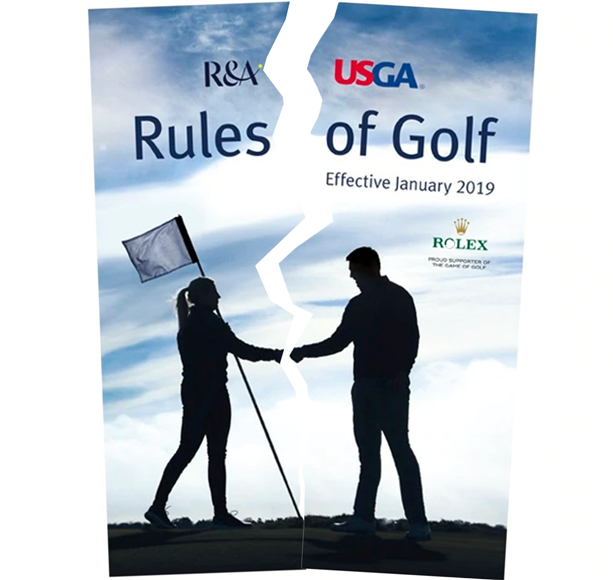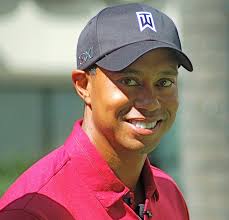By Ed Travis
Golf’s ruling bodies, the USGA and The R&A, are just steps away from dictating that elite players (top amateurs and professionals) must compete with equipment different from recreational golfers.
On March 16 the USGA and The R&A sent out a press release covering recent results in the Distance Insight Report. A split, or bifurcation in the Rules of Golf, as they apply to equipment to curb the distance the ball travels, is under active consideration. Elites will play with drivers constructed to restrict distance, while regular golfers will be allowed drivers that can go farther.
The latest part of the process has been restricting the allowable length of clubs to 46 inches. The ruling bodies have also put manufacturers on notice of changes to the testing criteria for balls and clubs. Specifically, they are going to investigate the effects of moving the clubhead speed up 5 mph to 125 mph along with new standards for the ball launch angle and spin rate. The aim is to test with conditions more closely modeling those elite players are achieving, and the test results could then be applied to the standard for ball initial velocity.
The ruling bodies’ premise is, since some players are hitting tee shots farther older courses are being made obsolete, necessitating additional land and other resources to retain the integrity of the game. Both the facts and their interpretation have been challenged and though dissenters may have been heard, the USGA and The R&A do not seem to be listening.
The rules split may benefit recreational players due to the removal of the allowable limit on the amount of rebound, or MOI to a club face. Dropping the present MOI restrictions gives average players the potential to generate more distance without swinging faster. This is being seen as a good thing, although the gain will be minimal. No one will complain of a few extra yards of driving distance.
It seems safe to assume the decision has been made to split the Rules of Golf. Although the word bifurcation is unpleasant, it appears the game will be divided into an us-and-them scenario.
If that is the case, several important questions remain to be answered.
Will weekend warriors be forced to play with restricted lower-performance clubs? No one wants to hit it shorter.
How will the level of skill, or elite-ness be measured?
How will the classes of players, elite and non-elite, be determined?
Will there be the handicap divisions?
Will average driving distance determine what clubs a player can use?
Type of competition?
Will this apply to tour professionals only?
What about collegiate, high school, or top junior players?
The USGA and The R&A have made several controversial rulings over the past decade, but it appears they will be wading into a minefield of regulation red tape that will discourage golfers, rather than make the game more appealing.
Will the restricted equipment rules apply only to males? Women have been hitting the ball farther too, but the USGA and The R&A’s focus seems only to be on men. Women usually play from tees more forward, so female long drivers may be causing a problem, as well. Segregating the Rules of Golf by sex would be a first. That has the ring of a sexual lawsuit to it.
Club manufacturers will need to reassess club marketing. Drivers will no longer be “just like the ones played on Tour.” An undeniable charm for golfers is comparing our meager efforts with the stars. If the rollback in distance is 10%, Rory’s 330-yard blast will be reduced to 297-yards, but done with a club that fans can’t buy, so how can it be promoted?
Will Callaway, Acushnet, TaylorMade, Cobra, Ping, and other club manufacturers, who spend millions on player endorsements, allow their business plan to be made obsolete? It will certainly bring into question paying millions of dollars for endorsements, if they can’t sell the new clubs.
How does restricting driver performance affect club technology innovation? The quest for improved designs, materials and engineering is both expensive and time consuming. Without a profitable way to connect the “restricted-tech” clubs, used by professionals, with the new “latest and greatest,” allowed for recreational golfers, a whole new marketing strategy must be implemented.
What will be done with the golf ball for elites? “Rolling back” the ball may have been a consideration, but discarded to concentrate on drivers. Changes to golf ball performance will be another minefield not easily negotiated.
The USGA and The R&A have said little regarding improved player fitness and athleticism, not to mention extensive use of computerized swing analysis and training. Performance gains in this area are almost sure to continue. What happens if elites’ driving distance continues to increase even with restricted equipment?
Driving distance is also influenced by course conditions such as firmness of the fairways, which has also not been addressed. Today’s manicured fairways roll like the greens did 20 years ago.
Elite golfers train to take advantage of this with drivers dialed-in for the best launch angle and spin rate for the maximum carry distance and roll. Many of the courses, played by the PGA TOUR have generous fairways with little rough reducing any premium on accuracy and giving distance a disproportionate role.
How will the professional tours react with this curbing of players performance? The PGA Tour is in the entertainment business and may not want to hurt their product by reducing the thrill and fan interest in long hitting by complying with the USGA and The R&A. We might see certain drivers allowed in regular Tour events but not allowed in the U.S. Open, or THE Open Championship. Wouldn’t that be a mess!
The USGA, and The R&A have seemingly set their minds on the idea that the ball goes too far. Trying to avoid a repeat of the square-groove debacle, they have taken a more calculated approach, asking for golfer’s feedback, to give the impression the subject was open to debate.
This raises the larger question of the USGA and The R&A relevance to recreational players and our opinion of splitting the Rules of Golf segregated by classes of players, or sex. The USGA and R&A are again venturing into the great unknown and it’s a void labeled, “Does Anybody Care?”
Their desire to turnback the clock reflects a prejudice against future progress and innovation.
While these changes can be bullied through, we wonder if the cost may be too high for the overall good of the game?










